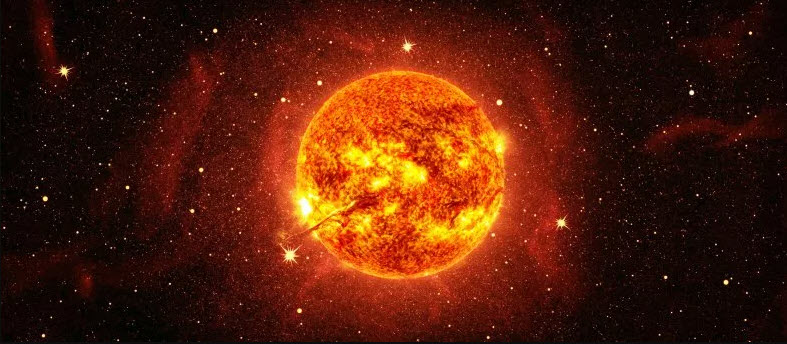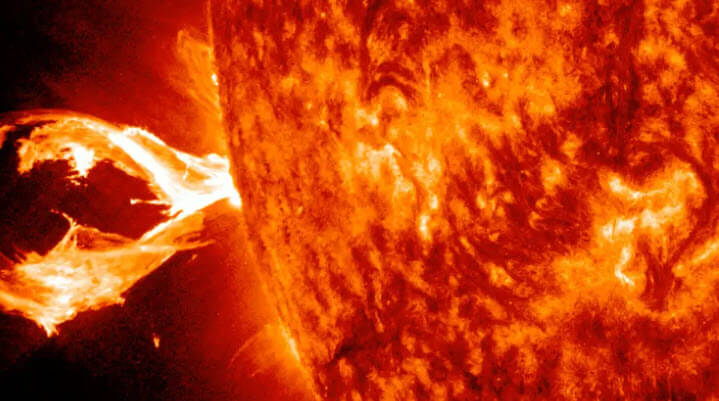A massive eruption of solar material, known as a coronal mass ejection or CME, was detected escaping from the sun at 11:36 p.m. EDT on March 12, 2023.
Check out the devastating effects of a CMR from minute 3:10 onward in the video above
Sightings of polar lights far into the middle latitudes, for example in Arizona in the USA or in Germany, show that the sun is sending electrically charged particles and radiation towards the earth more frequently again.
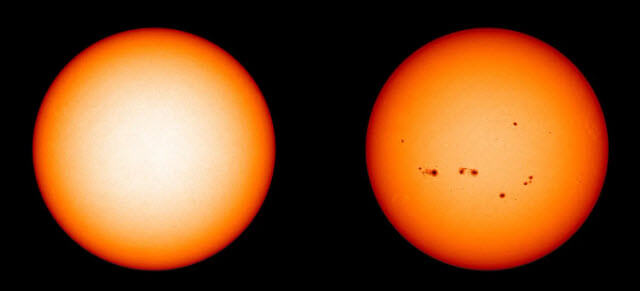
Dark spots on the star’s surface are signs of its activity—they emanate the solar storms that produce the auroras. Since the last spot minimum in December 2019, solar activity has increased much faster than most scientists expected.
What can happen if you underestimate this development was shown last year when the American aerospace company SpaceX lost 40 satellites in one fell swoop: The earth’s atmosphere had expanded due to a solar storm – as a result, the air resistance for the satellites became so great that they crashed.
A weak solar cycle has been predicted – but they got it wrong!
The sun reaches its peak number of spots approximately every eleven years. But the duration of the cycles fluctuates, as does the maximum activity achieved.
A large research group has sought and found a consensus for the joint prognosis: According to this consensus prognosis – prepared in the USA by the space agency Nasa and the climate agency NOAA – the 25th solar cycle should be as weak as the 24th cycle, which is the weakest in a hundred years was. Some scientists even spoke of a possible repetition of the so-called Dalton Minimum, which was a phase of reduced activity between 1790 and 1830.
But nothing will come of it. Images of the sun reveal: it is already behaving as wildly as it should, according to the forecast, only during the maximum in about two years.
But a few researchers got it pretty much right so far. A team led by astrophysicists Scott McIntosh from the National Center for Atmospheric Research and Robert Leamon from NASA has predicted the sharp rise in solar activity.
Unfortunately – how the sun’s dynamo works is unclear
Predicting the solar cycle is still a challenging task for scientists. “We don’t understand the sun well enough,” admits astronomer Sami Solanki from the Max Planck Institute for Solar System Research in Göttingen, Germany.
The sun is made up of electrically charged gases called plasma. By rotating, these gases create a magnetic field, similar to a dynamo on a bicycle. According to Solanki, scientists are not yet in agreement on exactly how the solar dynamo works. “There is no generally accepted model,” he says. But you would have to have that to predict the sunspot cycle. Because the cycle is related to changes in the magnetic field – the spots are areas where the magnetic field is particularly strong.
The sun’s magnetic field could be the key
McIntosh and Leamon use different information for their prediction. According to these researchers, the behavior of the solar magnetic field at the sun’s equator can be used to predict what the next cycle will be like.
Basically, the sunspots form in two strip-like areas with a strong magnetic field. These areas appear in both hemispheres at the 50th degree of latitude. At first they seem quite inconspicuous and slowly migrate towards the solar equator. In the further course, the sunspots then appear on the strips.
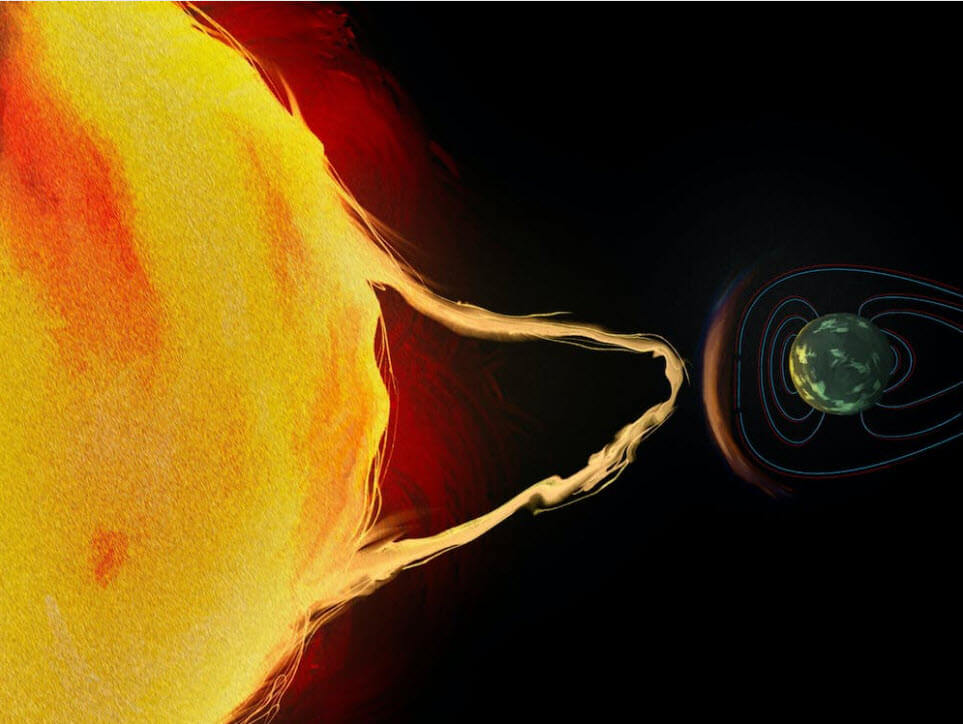
The whole migration of such an area takes 22 years on average. Because the lifetimes of two consecutive stripes overlap by 11 years, four exist at the same time – two on each side of the equator.
According to McIntosh, the decisive factor is what happens when two magnetic field strips reach the equator and disappear at the end of their lifetime. That triggers a kind of tsunami on the sun, he says. The first sunspots then begin to sprout in the two younger strips, which are at around the 25th parallel at the time.
McIntosh calls this point in time – when two stripes are extinguished and two become active – “Terminator“. The exact dating provides the crucial information for his prognosis: the less time has elapsed between the last two “Terminator” events, the stronger the next sunspot cycle should be.
The peak is expected to occur in 2024 or 2025
The last two “Terminator” events were observed in 2011 and 2021. The gap was therefore 10 years, one year less than the average. On this basis, the team around McIntosh and Leamon calculated that the 25th solar cycle will reach a maximum number of spots of about 184. According to the NASA/NOAA consensus forecast, there should have been only about 115 spots, but that level has long since been reached.
McIntosh and Leamon also predict that the current solar cycle will peak in 2024 or 2025. Then there would be even more solar storms than during the initial phase. Accordingly, all solar researchers are now following the further development of the activity with great interest.
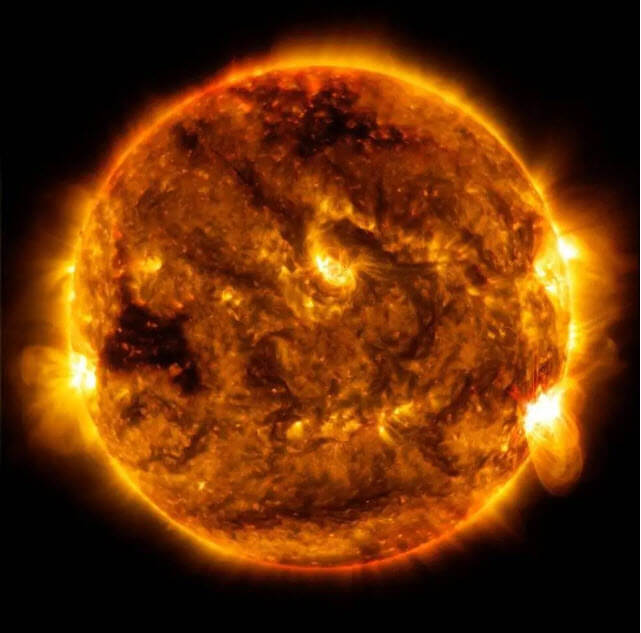
We’re in for a bumpy ride!
The 25th solar cycle is not only a test of how well scientists can predict the behavior of the central star. It could also become an involuntary test of the robustness of human civilization.
The weak solar activity in recent years has given humanity a little reassurance. The last really strong cycle happened more than 30 years ago. No one can say for sure how the infrastructure that has since been created will react to violent solar storms. In addition to satellites, power supply and telecommunications are among the endangered areas of technology.
The sun is expected to reach its solar maximum as part of its regular 11-year cycle in 2025. The next termination event is expected to occur when Solar Cycle 25 gives way to Solar Cycle 26 in around 2030.
«2024 and 2024 could be a bumpy ride …” says McIntosh.
All the more reason to prepare and get your Faraday Cage ready to protect essential electronic equipment and communication devices like mobile phones, ham radios, solar battery packs, spare laptops and charging devices. To rely on any Government wherever you live to have robust protection measures in place is to leave things to bureaucrats in their ivory towers.
You owe it to yourself and your family to take responsibility for this yourself and ensure your vital communication devices continue to function after a Solar Flare or CME.
